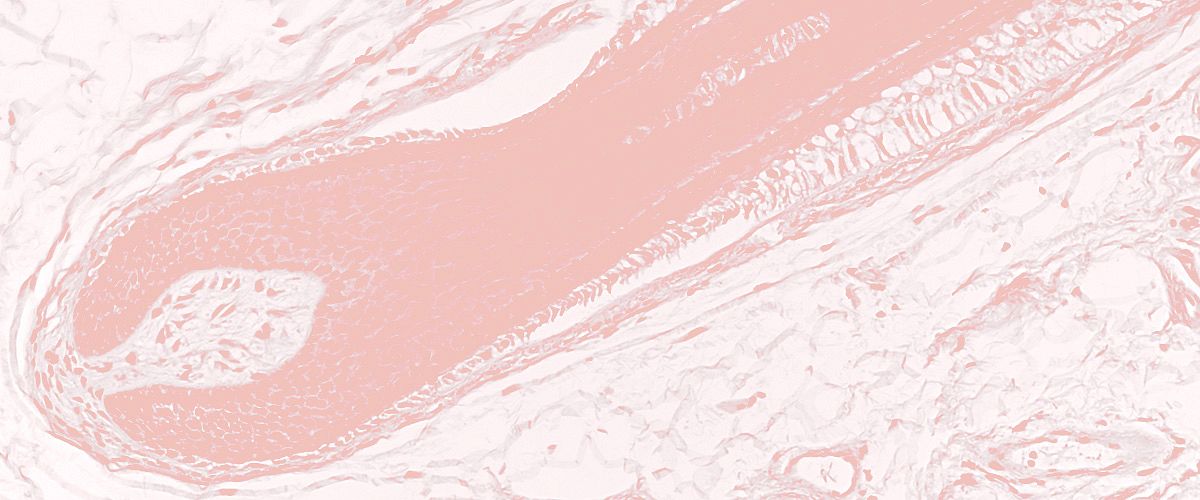Electrolysis hair removal for hirsutism

Hirsutism is a condition of unwanted, male-pattern hair growth in women. Hirsutism results in excessive amounts of hair on facial and body areas in women where men typically grow hair — face, chest and back.
Hirsutism refers to abnormal hair growth in women in androgen-dependent sites while hypertrichosis is excess hair growth in any body site.
Hirsutism affects between 5–15% of all women across all ethnic backgrounds. Depending on the data, approximately 40% of women have some degree of unwanted facial hair. Hirsutism can cause much psychological distress and social difficulties. Unwanted facial hair often leads to the avoidance of social situations and to symptoms of anxiety and depression. Hirsutism can be devastating to a woman’s confidence and self-esteem.

Causes of hirsutism
Prior to puberty, the human body is covered in very fine, vellus hair. This is replaced during puberty in certain parts of the body by thick, long, darker hair known as terminal hair under the influence of androgens. In women with hirsutism some vellus hair is transformed into terminal hair, which is not supposed to happen.
Hirsutism can be caused by either an increased level of androgens, or an oversensitivity of hair follicles to those androgens. Although androgens are considered “male” hormones, women also have and need them, but in smaller quantities.
Whilst hirsutism itself is not a serious medical condition, it may well be the symptom of an underlying cause for concern. The most important point to note is that, if you are a woman with unusual and excessive hair growth you must seek proper medical advice from your physician prior to any hair removal treatment being considered. About half of all cases of unwanted female hair growth are due to high levels of “male” androgen hormones.
PCOS
Polycystic Ovary Syndrome (PCOS), the most common cause of hirsutism, is a hormonal imbalance caused by a combination of genetic and environmental factors. The main symptom of PCOS is usually the appearance of small and multiple cysts on the ovaries, but this is not always the case.
Treatment of hirsutism
As outlined, it is likely that there are underlying medical conditions causing hirsutism and therefore the treatment will often involve a multi-pronged approach. Prescribed medication can be used to treat the symptoms and redress the hormone imbalance causing the hirsutism e.g. oral contraceptive pills containing antiandrogenics or topical creams. In addition, hair removal methods can be used to treat the area to improve cosmetic appearance. There are a number of options, and which one is best and most appropriate for you, is your choice to make.
There is, however, only one option currently approved by the FDA that achieves permanent hair removal (as opposed to permanent hair reduction), namely electrolysis hair removal. Electrolysis hair removal, works by sending a small amount of energy into each hair follicle via a very fine probe in order to disable the follicle, and cause the hair to fall out.
Does electrolysis hair removal work for hirsutism?
Evidence supports that the use of electrolysis for permanent hair removal in localised areas, with repeated treatments, achieves 15% – 50% permanent hair loss. The biggest problem with electrolysis is that it treats individual hairs and is therefore very time-consuming, expensive and likely to be impractical for larger areas such as the back. If hairs are dark and skin is light, laser hair removal is probably the best solution for permanent hair reduction.
A variety of factors influence the exact quantification of the results of electrolysis in facial hirsutism:
Hirsutism is a dynamic process. At birth there are 1000 follicles per square centimeter in the facial area and no new hair follicles are developed after birth. However, follicles may continue to be activated throughout life by new androgen production and also fine vellus hairs may be converted to terminal hairs. The rate of hair growth in any given individual also tends to fluctuate for unknown reasons. The average person has 1,000 follicles per square inch. However, that does not mean one grows 1,000 hairs. Where a man may have 100, to 500 visible hairs in a square inch, a woman may have 0 to 25. You must understand that hormonal problems (like PCOS) work in such a way as to recruit new follicles to start growing hair, where they never grew them before. The severity of the problem defines how long it takes for new follicles to be recruited, and how many at a time are stimulated in that term. So, until one arrests the problem that is causing the new hair recruitment, one will continuously gain new hairs, and one may may have to come back forever.
Many patients are trying to suppress androgen effects with drugs such as dexamethasone and/or estrogen combinations and many were also trying to block androgen effects with spironolactone. Drugs are often taken at varying intervals and the effects are uncertain and imprecise.
Conclusion
In conclusion, it is fair to say that available evidence does support the use of electrolysis for hair removal as part of a larger treatment programme for small, localised areas. For larger areas, laser treatment can be used to achieve permanent hair reduction. Any treatment will be long-term and probably lifelong.
Related articles:
We are doing our very best to keep this information up-to-date. In case you see anything that no longer seems accurate, or in case you have a question, please fill out the form below!
